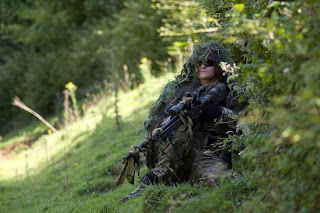I tried investigating why these couple images worked out. It seems that the greens that have a hue above 90-ish become more blue and greens that are below that become more yellow. For example, in the first image below the camouflage has a hue range of about 90 - 100, and the surroundings are between 80 and 90. It's not a huge difference, but after you apply the color blind script to it the difference becomes much bigger. The foliage becomes a value of about 60 while the camo is around 240.



